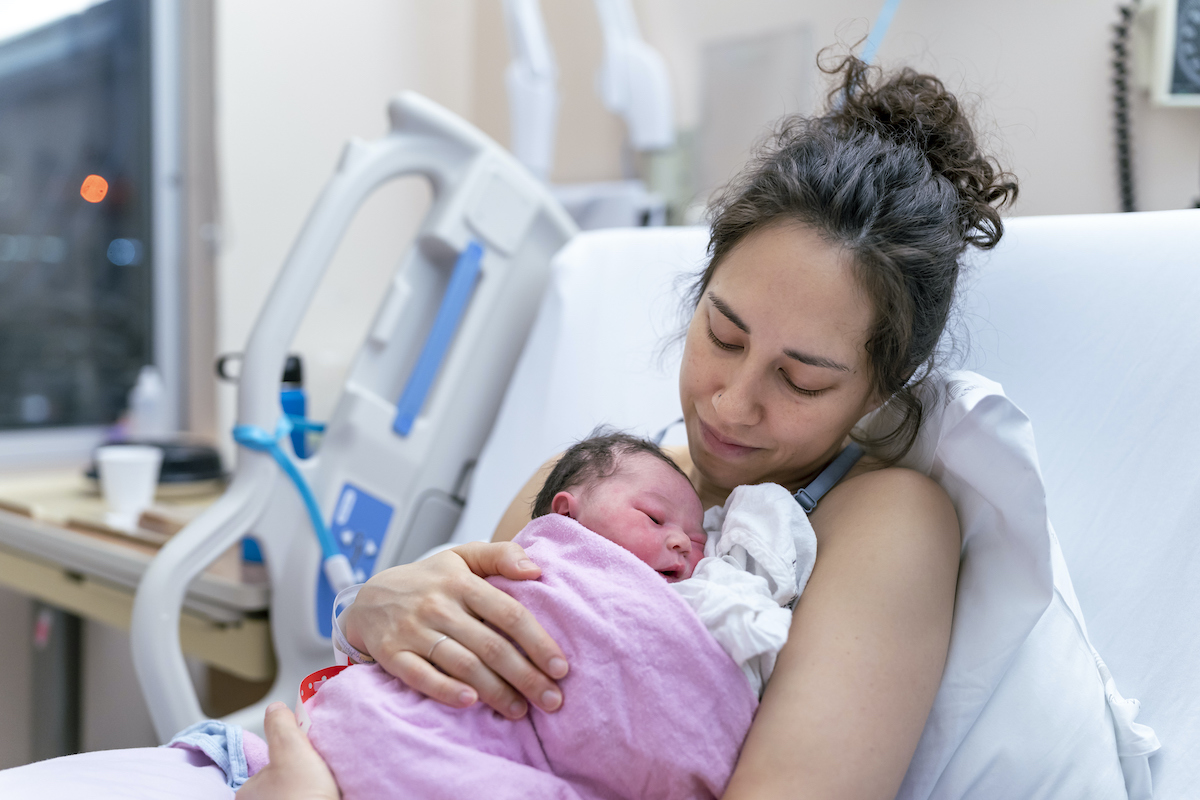Today we have a guest essay from Teryn Mattox, the director of research at GiveWell, a nonprofit that evaluates global health and development interventions to identify cost-effective programs. This essay dovetails well with the recent article on birth-friendly hospitals, where I mentioned, among other things, the evidence in favor of skin-to-skin contact right after delivery. Today’s essay talks more about that data — here, in the context of poorer countries — and about the difficulties in implementing programs even when we know they work. It’s a little window into how data can suggest solutions, but also how the world has its own challenges.—Emily
Ten years ago, when I was pregnant with my daughter, I heard a lot from my midwife about the importance of early skin-to-skin contact for attachment, and I was somewhat skeptical about the benefits. At that time, I was a researcher focusing on maternal and child health interventions in the U.S. and other high-income countries. Expecting Better hadn’t been released yet, but I read through the evidence on the recommendations I was receiving during my pregnancy and found that many, maybe even most, of those recommendations just didn’t hold up under scrutiny. (I’m looking at you, bed rest.)
That said, holding my new baby to my chest felt good, and my partner liked it too, so we did it, without thinking that we were really achieving all of those benefits my midwife claimed. It’s funny to look back at my skepticism then.
Fast-forward a decade, and I’m now the director of research at GiveWell. In that role, I have a newfound appreciation for the evidence behind my midwife’s advice. When implemented in low- and middle-income countries, the act of a mother holding her baby on her skin can save her preterm or low-birth-weight baby’s life.
In fact, prolonged skin-to-skin contact, often called kangaroo mother care (KMC), is so effective that it saves lives not only when conventional warming devices, like incubators, aren’t available (as is often the case in low-income countries) but also when used as a replacement for those devices. Often, early and exclusive breastfeeding is encouraged in KMC programs as well.
What is the impact of KMC on babies — and how does it work?
KMC has been shown to significantly reduce mortality in low-birth-weight infants across numerous studies conducted in low-income regions. A 2016 Cochrane meta-analysis demonstrates that KMC reduces neonatal mortality by around 30% for low-birth-weight babies. Additional studies released since then have found similar results.
The evidence base supporting KMC stands out as one of the more robust I’ve seen. It holds up across many trials and geographies, delivered in hospitals or communities. It’s wild to think that this kind of impact doesn’t come from a fancy new pharmaceutical or technology; it comes from the simple act of cuddling your baby.
There are a few ideas as to why KMC has such a dramatic impact. People have proposed that it’s easier to regulate a baby’s temperature this way, reducing hypothermia. Others have hypothesized that it increases breastfeeding, reduces infections, and improves attachment. Based on our research, it seems like all of these factors are real consequences of KMC, but we aren’t able to pinpoint exact mechanisms.
Globally, about half of mortality among children under 5 years old happens in the first month of life. The risk is higher among premature or very-low-birth-weight babies, especially in resource-limited settings. Given these facts, the efficacy in the data, and the effectively zero cost, it would seem obvious that KMC uptake would be high.
It is not. In many countries, fewer than 50% of low-birth-weight infants receive KMC. In our organization, and others like it, this question is a common issue: Why are some high-impact programs not implemented? Having data is one thing; using it is another.
Why isn’t KMC implemented more widely?
There are a number of barriers to implementation in existing hospital systems, especially in resource-scarce environments.
Neonatal intensive care unit nurses are busy and may not be able to prioritize implementing a new program. Clinics often don’t have the space for mothers to sit, much less with enough privacy for skin-to-skin care. Additionally, some providers see KMC as offering a lower standard of care than higher-tech incubators.
As an NGO, having identified a successful program, our goal is to fund organizations that could implement this at scale. In this case, we could not do that. We found that initiatives that had been launched to expand KMC had struggled to scale up. These scale-up challenges were evident in large-scale program evaluations we reviewed. For example, one study looked at KMC implementation across 39 health-care facilities in Malawi, Mali, Rwanda, and Uganda. Although these facilities had received technical or financial support to deliver KMC services, only about 30% demonstrated integration into routine care, and about 5% showed evidence of sustained KMC practice.
In the end, we concluded this program wasn’t a good funding target. It worked in principle but not in practice.
Then, around a year later, something cool happened. A colleague at a peer funding organization read our KMC report and put us in touch with R.I.C.E. (Research Institute for Compassionate Economics), based in Uttar Pradesh, India.
R.I.C.E. has pioneered a method for implementing KMC within a prominent government hospital in Uttar Pradesh. As we learned more about the organization, we realized their approach may address several of the barriers described above. They used their financial resources specifically to hire and train nurses for KMC implementation, rather than relying on existing (overburdened) nurses and using funding in other ways. They also create private KMC rooms within the hospital that allow for skin-to-skin contact, breastfeeding, and monitoring of mother-infant pairs practicing KMC. A key strength of R.I.C.E. is the strong relationships they build with hospitals, which support them in integrating KMC principles and identifying dedicated spaces.
GiveWell made a grant to support this programming and an evaluation of its impact. We are eager to learn from R.I.C.E.’s experience delivering KMC, as it could inform how to scale up this lifesaving technique.
Looking ahead
I feel fortunate to have given birth in a country where I had access to support and advice, even when it raised my eyebrows. Through my work at GiveWell, I’ve gained a profound appreciation for the life-changing impact of basic interventions like skin-to-skin contact for mothers and babies with limited access to health care. While my pregnancy experience sparked healthy skepticism, I now aim to direct that energy toward thoroughly examining the evidence behind potential solutions. Although our contexts differ greatly, as parents we all share the universal wish to give our children the best possible start in life.
Community Guidelines













Log in